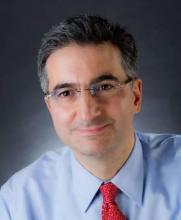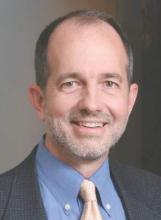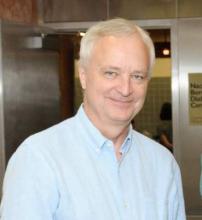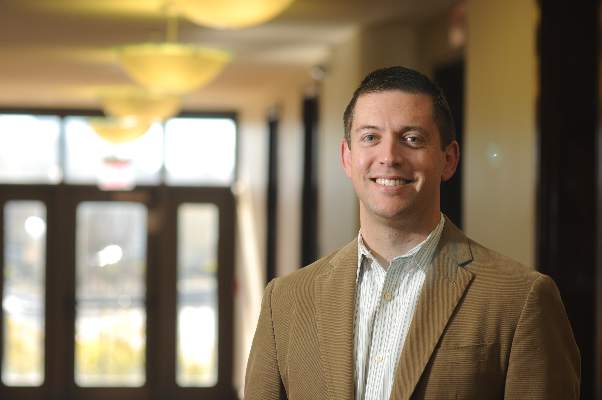User login
Fertility clinics are quick to tout their success rates to attract patients, but are they doing enough to disclose potential conflicts of interest and risks to oocyte donors?
A new report calls for professional societies to develop guidelines specifically addressing conflicts of interest in oocyte donation and to adopt tougher reporting and advertising standards (J Law Med Ethics. 2015 Jun;43[2]:410-24.).
While at least some measure of professional guidance addresses the potential conflicts that can arise at all four phases of oocyte donation – recruitment, screening and informed consent, ovarian stimulation, and follow-up – there is “a fracture between this guidance and actual practice,” the authors argued.
Some clinics and agencies may be minimizing risks in recruitment ads and websites, incentivizing repeated donations, or overstimulating donors for the benefit of recipients and clinic success rates.
One low-cost step to better inform a woman’s choice to donate would be to make complication rates publicly available along with the federally regulated annual success rates reported by the Centers for Disease Control and Prevention, said Aaron Levine, Ph.D., one of the report authors and an associate professor of public policy at the Georgia Institute of Technology in Atlanta.
“Sure, the clinics can complain it will require a little more paperwork and so on, but they should be tracking this already and if they’re not, a little nudge to track it better would be beneficial, in my view,” Dr. Levine said.
In 2010,Dr. Levine helped spark national debate after reporting that egg-donor payments rose $2,350 for every 100-point increase in SAT scores. The practice is not illegal and reflects, in part, the shortage of donors of certain ethnicities; however, the American Society for Reproductive Medicine (ASRM) egg donor compensation guidelines recommend payment not vary based on donor traits.
A separate systematic analysis of agency and clinic websites found that 34% of sites explicitly mentioned paying more for particular traits, 41% accepted donors under the ASRM recommended age minimum of 21, and many failed to present short-term (56%), long-term (92%), or psychological/emotional (77%) risks (Fertil Steril. 2012 Oct;98[4]: 995-1000).
A simple, cost-free solution may be to publish the names of programs that fail to follow ASRM/Society for Assisted Reproductive Technology (SART) guidelines, said study author Dr. Robert Klitzman, professor of psychiatry at Columbia University, New York, and director of the university’s master program in bioethics.
“There are carrots and sticks,” he said. “You can name-and-shame or you can praise those who are doing it.”
While fertility clinics tended to observe the guidelines, the analysis found that egg donor agencies or brokers were far more likely to advertise high payments, observed Dr. James Toner of the Atlanta Center for Reproductive Medicine.
“The profession cannot control what agencies offer their donors, nor prohibit private citizens from trying to find their own donors and offering exorbitant amounts,” said Dr. Toner, who is president of SART. “The true source of these guideline violations sits outside the profession.”
Dr. Klitzman argued that longitudinal follow-up is costly, but necessary to better understand the emotional and medical risks associated with egg donation. There is little interest from industry and the egg donors themselves may not want to think about creating a child for money. But, they may also look back in regret if they are childless at age 40 and have biological children they’re not in touch with, he said.
“Of course, if you go after 18- to 20-year-olds, their eggs are going to be better quality, but they’re probably going to think of these issues less,” he added.
Several studies have also shown that sperm donor–conceived offspring often want to know who their biological parent is, partly, for genetic and medical reasons to understand disease risk, Dr. Klitzman noted. In September 2014, the ASRM Ethics Committee updated its report on the interests, obligations, and rights in gamete donation and recommended that, “at minimum, gamete donors and recipients should be encouraged to provide appropriate medical updates.”
Dr. Levine acknowledged that ethical issues aren’t new to the infertility field, but said renewed attention is called for because of the increasingly high stakes involved in maintaining an adequate egg supply, increasing evidence of limited compliance with self-regulatory guidelines, and legal challenges to professional self-regulation.
In February 2015, the U.S. District Court for the Northern District of California granted in part the plaintiff’s motion for class certification in Kamakahi v. ASRM, a case filed in 2010 alleging that ASRM and SART engaged in price fixing by capping “appropriate” compensation in guidelines at $5,000, or $10,000 with justification.
The suit also names all SART-member fertility clinics and all egg agencies that agreed to abide by the ASRM-SART guidelines maximum price from April 12, 2007 to the present.
Also, in January 2015, the U.S. Tax Court ruled in favor of the Internal Revenue Service that $20,000 paid to a California woman for donating her eggs was compensation, not damages, and therefore taxable income.
The Kamakahi v. ASRM case is ongoing, but is already prompting some agencies to drop out of the ASRM, according to Andrew Vorzimer, a Woodland Hills, Calif., fertility lawyer. Mr. Vorzimer used to own Egg Donation Inc., but said he sold the Encino, Calif., infertility center in part because he could no longer compete with agencies who ignored the ASRM guidelines and were willing to offer six-figure payments for highly sought after donors. He continues to provide legal counsel to Egg Donation Inc.
“Most agencies ignore these guidelines anyway, so I think the likely result is, No. 1, that ASRM may simply withdraw all their guidelines and stay out of this entirely because they just don’t need the headache or liability, and you’re going to see the cost of egg donation skyrocket because the $10,000 dollar cap is going to go out the window,” Mr. Vorzimer said.
The IRS tax decision will also add upward pressure on egg prices because women are “going to want a larger amount to offset their tax liability,” he said.
Dr. Toner said that if the antitrust argument prevails in the courts, “...then I think the profession would stop providing guidance about reimbursement.”
Compensation, however, would be unlikely to take off. Even with the $10,000 cap in place, the going rate for eggs in Atlanta is about $6,000 per cycle. Few recipients, who ultimately pay the bill, would seek fertility treatment if the cost of eggs suddenly jumped from $6,000 to $30,000, he said. This downward pressure on the market is already being seen in states without insurance treatment mandates, whereas the “utilization of fertilization services is double or triple in states with coverage mandates,” Dr. Toner said.
Online ads may not include all the necessary information needed by donors, but “where the rubber hits the road” is in the clinic, he said, adding: “The profession has done a laudable job when it comes to egg donors. They are fully informed, treated as patients and fairly compensated for their time and effort.”
The new report from Dr. Levine and his colleagues discusses various possible oversight models, but ultimately balks at recommending federal or state laws or regulations. The authors conclude that improved self-regulation is the “most appropriate first step,” given the absence of compelling evidence of harm to donors associated with potential conflicts and feasibility concerns associated with other oversight models.
“Everyone is clamoring for more regulation,” said Dr. Mark V. Sauer, a member of ASRM’s Ethics Committee and director of Columbia’s Center for Women’s Reproductive Care. But he contended that the practice of reproductive medicine is probably already the most regulated form of medicine in the country. Moreover, the ASRM, not unlike the American Medical Association, is “not a policing professional society. They’re not a regulatory society,” he said.
Dr. Sauer declined to comment on the Kamakahi case, but said compensation rates in the highly competitive market of New York City have settled over the last 5 years at about $8,000 – the amount Columbia pays per cycle.
Fertility clinics are quick to tout their success rates to attract patients, but are they doing enough to disclose potential conflicts of interest and risks to oocyte donors?
A new report calls for professional societies to develop guidelines specifically addressing conflicts of interest in oocyte donation and to adopt tougher reporting and advertising standards (J Law Med Ethics. 2015 Jun;43[2]:410-24.).
While at least some measure of professional guidance addresses the potential conflicts that can arise at all four phases of oocyte donation – recruitment, screening and informed consent, ovarian stimulation, and follow-up – there is “a fracture between this guidance and actual practice,” the authors argued.
Some clinics and agencies may be minimizing risks in recruitment ads and websites, incentivizing repeated donations, or overstimulating donors for the benefit of recipients and clinic success rates.
One low-cost step to better inform a woman’s choice to donate would be to make complication rates publicly available along with the federally regulated annual success rates reported by the Centers for Disease Control and Prevention, said Aaron Levine, Ph.D., one of the report authors and an associate professor of public policy at the Georgia Institute of Technology in Atlanta.
“Sure, the clinics can complain it will require a little more paperwork and so on, but they should be tracking this already and if they’re not, a little nudge to track it better would be beneficial, in my view,” Dr. Levine said.
In 2010,Dr. Levine helped spark national debate after reporting that egg-donor payments rose $2,350 for every 100-point increase in SAT scores. The practice is not illegal and reflects, in part, the shortage of donors of certain ethnicities; however, the American Society for Reproductive Medicine (ASRM) egg donor compensation guidelines recommend payment not vary based on donor traits.
A separate systematic analysis of agency and clinic websites found that 34% of sites explicitly mentioned paying more for particular traits, 41% accepted donors under the ASRM recommended age minimum of 21, and many failed to present short-term (56%), long-term (92%), or psychological/emotional (77%) risks (Fertil Steril. 2012 Oct;98[4]: 995-1000).
A simple, cost-free solution may be to publish the names of programs that fail to follow ASRM/Society for Assisted Reproductive Technology (SART) guidelines, said study author Dr. Robert Klitzman, professor of psychiatry at Columbia University, New York, and director of the university’s master program in bioethics.
“There are carrots and sticks,” he said. “You can name-and-shame or you can praise those who are doing it.”
While fertility clinics tended to observe the guidelines, the analysis found that egg donor agencies or brokers were far more likely to advertise high payments, observed Dr. James Toner of the Atlanta Center for Reproductive Medicine.
“The profession cannot control what agencies offer their donors, nor prohibit private citizens from trying to find their own donors and offering exorbitant amounts,” said Dr. Toner, who is president of SART. “The true source of these guideline violations sits outside the profession.”
Dr. Klitzman argued that longitudinal follow-up is costly, but necessary to better understand the emotional and medical risks associated with egg donation. There is little interest from industry and the egg donors themselves may not want to think about creating a child for money. But, they may also look back in regret if they are childless at age 40 and have biological children they’re not in touch with, he said.
“Of course, if you go after 18- to 20-year-olds, their eggs are going to be better quality, but they’re probably going to think of these issues less,” he added.
Several studies have also shown that sperm donor–conceived offspring often want to know who their biological parent is, partly, for genetic and medical reasons to understand disease risk, Dr. Klitzman noted. In September 2014, the ASRM Ethics Committee updated its report on the interests, obligations, and rights in gamete donation and recommended that, “at minimum, gamete donors and recipients should be encouraged to provide appropriate medical updates.”
Dr. Levine acknowledged that ethical issues aren’t new to the infertility field, but said renewed attention is called for because of the increasingly high stakes involved in maintaining an adequate egg supply, increasing evidence of limited compliance with self-regulatory guidelines, and legal challenges to professional self-regulation.
In February 2015, the U.S. District Court for the Northern District of California granted in part the plaintiff’s motion for class certification in Kamakahi v. ASRM, a case filed in 2010 alleging that ASRM and SART engaged in price fixing by capping “appropriate” compensation in guidelines at $5,000, or $10,000 with justification.
The suit also names all SART-member fertility clinics and all egg agencies that agreed to abide by the ASRM-SART guidelines maximum price from April 12, 2007 to the present.
Also, in January 2015, the U.S. Tax Court ruled in favor of the Internal Revenue Service that $20,000 paid to a California woman for donating her eggs was compensation, not damages, and therefore taxable income.
The Kamakahi v. ASRM case is ongoing, but is already prompting some agencies to drop out of the ASRM, according to Andrew Vorzimer, a Woodland Hills, Calif., fertility lawyer. Mr. Vorzimer used to own Egg Donation Inc., but said he sold the Encino, Calif., infertility center in part because he could no longer compete with agencies who ignored the ASRM guidelines and were willing to offer six-figure payments for highly sought after donors. He continues to provide legal counsel to Egg Donation Inc.
“Most agencies ignore these guidelines anyway, so I think the likely result is, No. 1, that ASRM may simply withdraw all their guidelines and stay out of this entirely because they just don’t need the headache or liability, and you’re going to see the cost of egg donation skyrocket because the $10,000 dollar cap is going to go out the window,” Mr. Vorzimer said.
The IRS tax decision will also add upward pressure on egg prices because women are “going to want a larger amount to offset their tax liability,” he said.
Dr. Toner said that if the antitrust argument prevails in the courts, “...then I think the profession would stop providing guidance about reimbursement.”
Compensation, however, would be unlikely to take off. Even with the $10,000 cap in place, the going rate for eggs in Atlanta is about $6,000 per cycle. Few recipients, who ultimately pay the bill, would seek fertility treatment if the cost of eggs suddenly jumped from $6,000 to $30,000, he said. This downward pressure on the market is already being seen in states without insurance treatment mandates, whereas the “utilization of fertilization services is double or triple in states with coverage mandates,” Dr. Toner said.
Online ads may not include all the necessary information needed by donors, but “where the rubber hits the road” is in the clinic, he said, adding: “The profession has done a laudable job when it comes to egg donors. They are fully informed, treated as patients and fairly compensated for their time and effort.”
The new report from Dr. Levine and his colleagues discusses various possible oversight models, but ultimately balks at recommending federal or state laws or regulations. The authors conclude that improved self-regulation is the “most appropriate first step,” given the absence of compelling evidence of harm to donors associated with potential conflicts and feasibility concerns associated with other oversight models.
“Everyone is clamoring for more regulation,” said Dr. Mark V. Sauer, a member of ASRM’s Ethics Committee and director of Columbia’s Center for Women’s Reproductive Care. But he contended that the practice of reproductive medicine is probably already the most regulated form of medicine in the country. Moreover, the ASRM, not unlike the American Medical Association, is “not a policing professional society. They’re not a regulatory society,” he said.
Dr. Sauer declined to comment on the Kamakahi case, but said compensation rates in the highly competitive market of New York City have settled over the last 5 years at about $8,000 – the amount Columbia pays per cycle.
Fertility clinics are quick to tout their success rates to attract patients, but are they doing enough to disclose potential conflicts of interest and risks to oocyte donors?
A new report calls for professional societies to develop guidelines specifically addressing conflicts of interest in oocyte donation and to adopt tougher reporting and advertising standards (J Law Med Ethics. 2015 Jun;43[2]:410-24.).
While at least some measure of professional guidance addresses the potential conflicts that can arise at all four phases of oocyte donation – recruitment, screening and informed consent, ovarian stimulation, and follow-up – there is “a fracture between this guidance and actual practice,” the authors argued.
Some clinics and agencies may be minimizing risks in recruitment ads and websites, incentivizing repeated donations, or overstimulating donors for the benefit of recipients and clinic success rates.
One low-cost step to better inform a woman’s choice to donate would be to make complication rates publicly available along with the federally regulated annual success rates reported by the Centers for Disease Control and Prevention, said Aaron Levine, Ph.D., one of the report authors and an associate professor of public policy at the Georgia Institute of Technology in Atlanta.
“Sure, the clinics can complain it will require a little more paperwork and so on, but they should be tracking this already and if they’re not, a little nudge to track it better would be beneficial, in my view,” Dr. Levine said.
In 2010,Dr. Levine helped spark national debate after reporting that egg-donor payments rose $2,350 for every 100-point increase in SAT scores. The practice is not illegal and reflects, in part, the shortage of donors of certain ethnicities; however, the American Society for Reproductive Medicine (ASRM) egg donor compensation guidelines recommend payment not vary based on donor traits.
A separate systematic analysis of agency and clinic websites found that 34% of sites explicitly mentioned paying more for particular traits, 41% accepted donors under the ASRM recommended age minimum of 21, and many failed to present short-term (56%), long-term (92%), or psychological/emotional (77%) risks (Fertil Steril. 2012 Oct;98[4]: 995-1000).
A simple, cost-free solution may be to publish the names of programs that fail to follow ASRM/Society for Assisted Reproductive Technology (SART) guidelines, said study author Dr. Robert Klitzman, professor of psychiatry at Columbia University, New York, and director of the university’s master program in bioethics.
“There are carrots and sticks,” he said. “You can name-and-shame or you can praise those who are doing it.”
While fertility clinics tended to observe the guidelines, the analysis found that egg donor agencies or brokers were far more likely to advertise high payments, observed Dr. James Toner of the Atlanta Center for Reproductive Medicine.
“The profession cannot control what agencies offer their donors, nor prohibit private citizens from trying to find their own donors and offering exorbitant amounts,” said Dr. Toner, who is president of SART. “The true source of these guideline violations sits outside the profession.”
Dr. Klitzman argued that longitudinal follow-up is costly, but necessary to better understand the emotional and medical risks associated with egg donation. There is little interest from industry and the egg donors themselves may not want to think about creating a child for money. But, they may also look back in regret if they are childless at age 40 and have biological children they’re not in touch with, he said.
“Of course, if you go after 18- to 20-year-olds, their eggs are going to be better quality, but they’re probably going to think of these issues less,” he added.
Several studies have also shown that sperm donor–conceived offspring often want to know who their biological parent is, partly, for genetic and medical reasons to understand disease risk, Dr. Klitzman noted. In September 2014, the ASRM Ethics Committee updated its report on the interests, obligations, and rights in gamete donation and recommended that, “at minimum, gamete donors and recipients should be encouraged to provide appropriate medical updates.”
Dr. Levine acknowledged that ethical issues aren’t new to the infertility field, but said renewed attention is called for because of the increasingly high stakes involved in maintaining an adequate egg supply, increasing evidence of limited compliance with self-regulatory guidelines, and legal challenges to professional self-regulation.
In February 2015, the U.S. District Court for the Northern District of California granted in part the plaintiff’s motion for class certification in Kamakahi v. ASRM, a case filed in 2010 alleging that ASRM and SART engaged in price fixing by capping “appropriate” compensation in guidelines at $5,000, or $10,000 with justification.
The suit also names all SART-member fertility clinics and all egg agencies that agreed to abide by the ASRM-SART guidelines maximum price from April 12, 2007 to the present.
Also, in January 2015, the U.S. Tax Court ruled in favor of the Internal Revenue Service that $20,000 paid to a California woman for donating her eggs was compensation, not damages, and therefore taxable income.
The Kamakahi v. ASRM case is ongoing, but is already prompting some agencies to drop out of the ASRM, according to Andrew Vorzimer, a Woodland Hills, Calif., fertility lawyer. Mr. Vorzimer used to own Egg Donation Inc., but said he sold the Encino, Calif., infertility center in part because he could no longer compete with agencies who ignored the ASRM guidelines and were willing to offer six-figure payments for highly sought after donors. He continues to provide legal counsel to Egg Donation Inc.
“Most agencies ignore these guidelines anyway, so I think the likely result is, No. 1, that ASRM may simply withdraw all their guidelines and stay out of this entirely because they just don’t need the headache or liability, and you’re going to see the cost of egg donation skyrocket because the $10,000 dollar cap is going to go out the window,” Mr. Vorzimer said.
The IRS tax decision will also add upward pressure on egg prices because women are “going to want a larger amount to offset their tax liability,” he said.
Dr. Toner said that if the antitrust argument prevails in the courts, “...then I think the profession would stop providing guidance about reimbursement.”
Compensation, however, would be unlikely to take off. Even with the $10,000 cap in place, the going rate for eggs in Atlanta is about $6,000 per cycle. Few recipients, who ultimately pay the bill, would seek fertility treatment if the cost of eggs suddenly jumped from $6,000 to $30,000, he said. This downward pressure on the market is already being seen in states without insurance treatment mandates, whereas the “utilization of fertilization services is double or triple in states with coverage mandates,” Dr. Toner said.
Online ads may not include all the necessary information needed by donors, but “where the rubber hits the road” is in the clinic, he said, adding: “The profession has done a laudable job when it comes to egg donors. They are fully informed, treated as patients and fairly compensated for their time and effort.”
The new report from Dr. Levine and his colleagues discusses various possible oversight models, but ultimately balks at recommending federal or state laws or regulations. The authors conclude that improved self-regulation is the “most appropriate first step,” given the absence of compelling evidence of harm to donors associated with potential conflicts and feasibility concerns associated with other oversight models.
“Everyone is clamoring for more regulation,” said Dr. Mark V. Sauer, a member of ASRM’s Ethics Committee and director of Columbia’s Center for Women’s Reproductive Care. But he contended that the practice of reproductive medicine is probably already the most regulated form of medicine in the country. Moreover, the ASRM, not unlike the American Medical Association, is “not a policing professional society. They’re not a regulatory society,” he said.
Dr. Sauer declined to comment on the Kamakahi case, but said compensation rates in the highly competitive market of New York City have settled over the last 5 years at about $8,000 – the amount Columbia pays per cycle.





